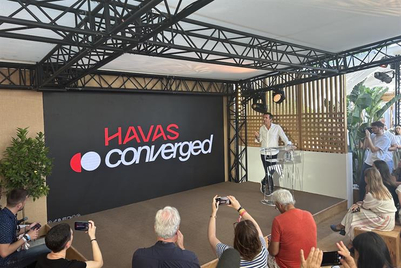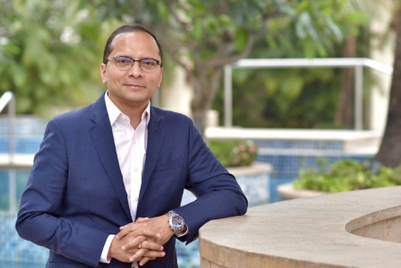
Havas became the latest global ad agency group to report strong growth in Q2 as organic revenues jumped 11.5%–in contrast to many of the digital ad platforms such as Meta, Snap, Twitter and YouTube, where sales growth has slowed sharply over the same period.
Vivendi, the parent company of Havas, hailed “the very good momentum” at Havas Group as revenue growth was sustained in the first half of 2022 after an 11.4% increase in Q1.
Havas Group’s H1 revenues of €1.26billion (£1.06bn), up 11.5% over the six-month period, were against tough year-on-year comparisons as the ad market experienced a major bounceback in 2021 following the coronavirus slump of 2020.
Vivendi said: “This excellent half-year operating performance [of Havas Group] is attributable to the robust commercial momentum built over recent quarters across all three divisions: creative, media and health & wellness.”
“Each region reported strong organic growth for the first half of 2022: Europe +11.7%, North America +7.6%, Asia Pacific +10.7%, and a strong recovery in Latin America +47.7%.”

Profits before exceptional items rose 28% to €112 million in H1–“thanks to solid organic growth and the on-going benefits of the cost adjustment plan, despite a significant increase in personnel costs in the first half of the year”.
An accompanying investor presentation showed health and wellness clients made up 31% of Havas Group’s net revenues–far more than any other sector–with finance (10%) and consumer goods (9%) the next biggest sectors in its client mix.
Simplifying our organisation and pursuing deeper integration
Yannick Bolloré, chairman of the supervisory board of Vivendi and chief executive of Havas, said in a message to staff: “These strong results give us every encouragement to keep accelerating the pace of our transformation, by simplifying our organisation and pursuing the deeper integration of our networks.”
Earlier this month, Chris Hirst, the global chief executive of Havas Creative Group, exited in a surprise move and Havas handed oversight of its creative division to Donna Murphy, the global chief executive of Havas Health & You, the health arm.
Campaign reported at the time that creative and health were expected to continue to operate as standalone business units but will align more closely on pitches and work.
“This is not health taking over creative; that’s not what’s happening here,” Murphy said. “It’s leveraging the best of each side where appropriate.”
Hirst’s abrupt departure was one of several major changes in the creative unit, as Laura Maness, the chief executive of Havas New York, also quit to join WPP and become global chief executive of Grey.
Moving into growth areas
Interpublic, Omnicom and Publicis have already reported good Q2 results, with organic revenues up 7.9%, 11.3% and 10.3% respectively. WPP reports on 5 August.
All of the agency groups posted sharp revenue declines in 2020 that recovered in 2021. Analysts have said their move into areas such as digital transformation consulting, CRM, retail media and pharmaceutical marketing has fuelled growth.
By contrast, the digital ad platforms grew strongly in both 2020 and 2021 as consumers spent more time at home during lockdowns.
But revenues at Meta, Snap, Twitter and YouTube have slowed in 2022 for several reasons, including growing economic uncertainty and Apple’s curbs on digital ad targeting.
However, Bolloré said in his memo: “We can look to the second half of 2022 with confidence, despite the uncertainties of the macroeconomic situation, the ever-present pandemic and the current geopolitical instability.”
He added: “I would like to take this opportunity to once again congratulate Donna Murphy who, as part of this [simplification] process, takes on the leadership of Havas Creative Group in addition to her role as global CEO of Havas Health & You, and to Peter Mears, global CEO of Havas Media Group, who takes on the additional role of chairman of the Havas North America Village, with the task of driving growth and closer interaction between our businesses in one of our biggest markets.
(This article first appeared on CampaignLive.com)


.jpg&h=334&w=500&q=100&v=20250320&c=1)
.jpg&h=334&w=500&q=100&v=20250320&c=1)

.jpg&h=334&w=500&q=100&v=20250320&c=1)


.jpg&h=334&w=500&q=100&v=20250320&c=1)


.jpg&h=334&w=500&q=100&v=20250320&c=1)
.png&h=268&w=401&q=100&v=20250320&c=1)




.jpg&h=268&w=401&q=100&v=20250320&c=1)


